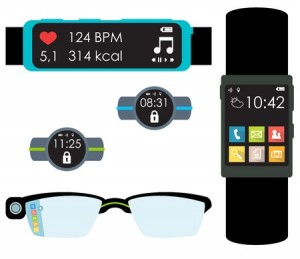Rumours of a dystopian future are greatly exaggerated…
Chris Gabriel, Chief Digital Officer Europe for Logicalis, considers some of the more challenging technology predictions for the next two years, and argues that technology should be enabling, not self serving.
Perusing the seasonal technology predictions – the plethora of ‘what’ll be big in 2016’ articles – has been interesting. The more I read, the more I was struck by a rather uncomfortable theme – at least a theme that I think would be unpopular if these articles were widely read outside of the IT industry.
Future-gazing pieces that, to technologists, are about the increasing use of computing to take over mundane tasks hence freeing humans to focus on innovation, creativity and collaboration, could easily be read as some kind of precursor to the Terminator movies. I was struck by how some predictions could seem alarmingly like the march of the machines, computers taking over from humans altogether…
In essence the difference, between seeing these predictions as benign and seeing them as echoes of some dystopian future, boils down to your view of technology. But before I explain, it’s worth looking at four of the technology predictions that made me sit up and take notice:
- By 2018, 20 percent of business content will be authored by machines[1]. The idea is that automated composition machines can produce analytical information in written natural language, which is potentially useful for shareholder reports and budgets. I’ll admit my first reaction was to chuckle at the potential for ‘malgorithms’, left unattended to create amusingly inappropriate documents, or simply very long and boring ones (It was Sir Winston Churchill who once observed “This document’s length precludes it ever being read…”)On a more serious level, if this kind of technology makes it easier to produce high quality content by freeing up humans to focus their creativity on the most important parts, bring it on.
- By 2018, more than 3 million workers globally will be supervised by a “robo-boss.” [2] According to Gartner robots will begin to make decisions that previously would have been made by human managers. This one really does give pause for thought – the idea of being given ‘orders’ by a robot doesn’t sit well at all. But then, it’s also important to consider exactly what kind of decisions these robots are likely to take. They are unlikely to be conducting one on one, 360-degree reviews any time soon – there is simply no substitute for human interaction when it comes to leadership and motivation. More likely, they will take on and automate ‘bulk’ management tasks that require little in the way of personal intervention, nuanced management or a personal touch.
- By year-end 2018, 20 percent of smart buildings will have suffered from digital vandalism[3]. This prediction focuses on events that might, for instance, plunge a building into darkness, disarm fire prevention systems or deface digital signage – and it’s only fair to accept this is a genuine risk. Like all emerging, internet-connected technologies, smart building solutions do represent potential security vulnerabilities. To date, however, I am not aware of any real life, or significant incidents of this type - I am sure having manual fire alarms set off maliciously or in error is still a much more significant issue, for instance. That said, there is no doubt that, as with all IoT technologies, security will be an ever-present, significant consideration.
- By 2018, two million employees will be required to wear health and fitness tracking devices as a condition of employment[4]. On the face of it this sounds like a major violation of an individual’s privacy. But again, the reality depends on application. If these sensors tell us that an airline pilot is about to have a heart attack, or that a military recruit is being pushed too far, they could save lives. In truth, there are a great many potential applications where the use of health monitors seems perfectly sensible.
 By 2018, 2m employees will be required to wear health and fitness tracking devices as a condition of employment.
By 2018, 2m employees will be required to wear health and fitness tracking devices as a condition of employment.
So yes, whether you view these technology predictions as benign or potentially malevolent boils down to how you view technology, and how you view its potential application. In the end, technology should be enabling, not self serving – in the same way that today’s technology solutions should put customers at their core, rather than allowing their needs to be relegated to the status of near afterthought.
This applies to all these apparently dystopian predictions. As long as these technologies are developed and deployed with the desire to improve the human experience, to enable people rather than replace or subjugate them, then there will be nothing dystopian about them at all.
[1] Gartner Reveals Top Predictions for IT Organizations and Users for 2016 and Beyond – 6/10/15. http://www.gartner.com/newsroom/id/3143718
[2] ibid
[3] ibid
[4] ibid

